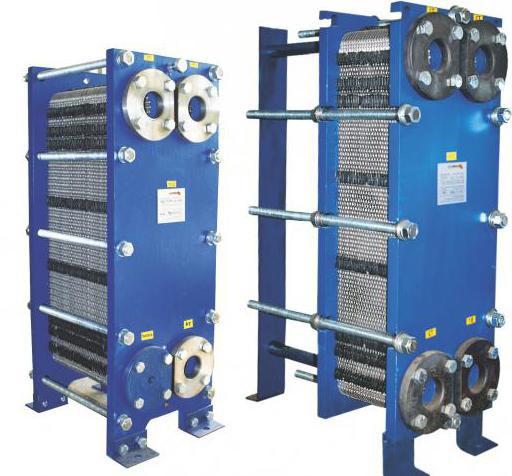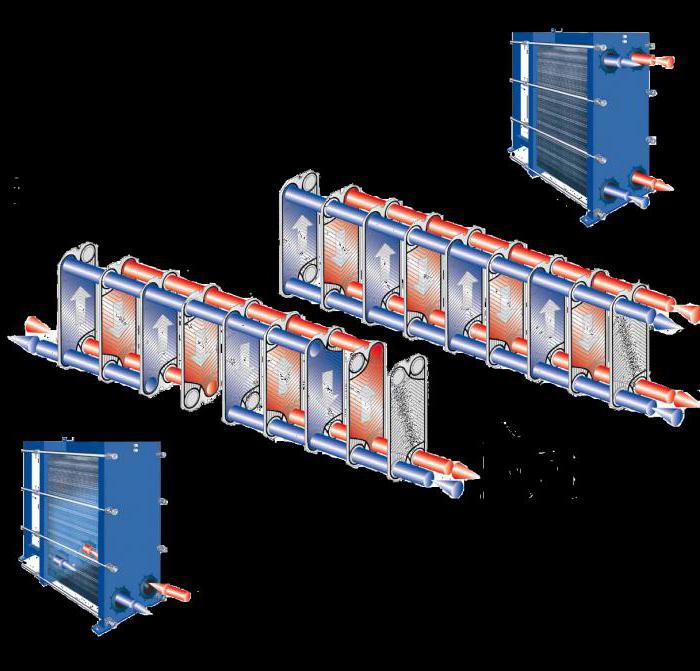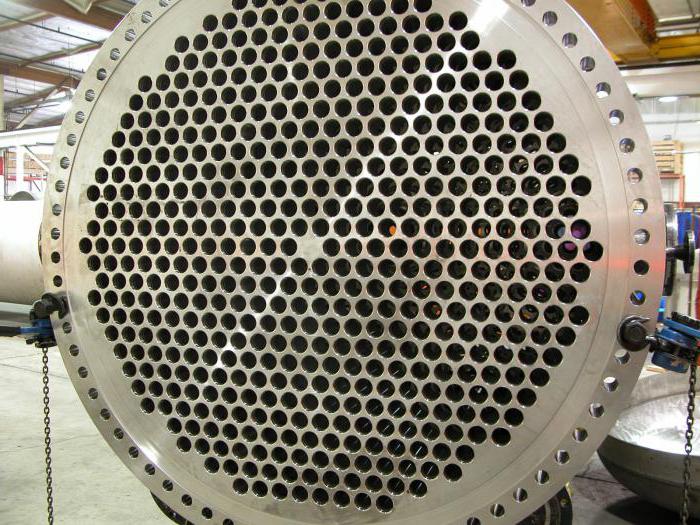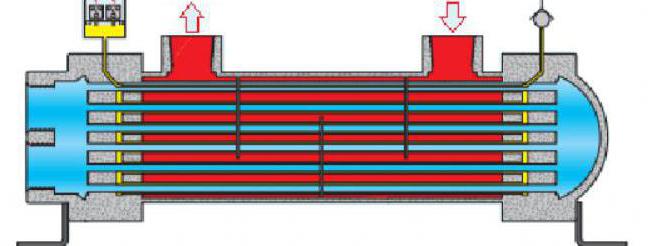Heating appliances that use fuel combustion to generate heat will not work without a flue duct. This component of the system eliminates toxic combustion products that pose a risk to human health. But the flue gases passing through the pipe and entering the atmosphere entrain a huge amount of heat that could be used to heat the home. In order to fix this minus, you can use a heat exchanger. With his own hands, every home master can make it. With this device you will significantly increase the efficiency of the heater.
System device

Heat exchangers are presented in a wide variety, each of them has distinctive features, however, the design of such devices, as well as the principle of operation, can be considered similar. If you have a desire to make a heat exchanger with your own hands, then you should know about its structure. As part of this device, there is a housing that has inlet and outlet nozzles. Inside is the braking device needed for flue gases. Most often, this system is a shutter with cutouts that are located on the axles.
The components rotate during operation, forming a zigzag duct, the length of which can be different. Adjusting the position of the dampers allows you to choose what will be the draft in the chimney, which will determine the efficiency of heat exchange. Moreover, the safety standards for the operation of the device will not be violated.
If you want to make a heat exchanger with your own hands, you can also make a simpler device that does not have adjustable dampers. The described addition can be installed, including, in the Buleryan furnace. In this case, cold air masses through the openings located in the lower part of the device will enter the interior of the structure. The air will heat up from the combustion products that pass through the chimney. After that, already warmed up hot air will come out.
Using this device allows you to increase efficiency by reducing the amount of fuel consumed. As practice shows, fuel consumption in a potbelly stove, which is equipped with a heat exchanger in the chimney, is reduced by 3 times. However, if you want to achieve such an effect, then you should correctly calculate the heat exchanger and choose a device.
Why is it important to make the right choice?

You must not forget that the combustion products give off their heat in the flue, cooling off in a short time. This causes a decrease in the temperature difference in the chimney, subsequently the draft in the system drops. In order to exclude this unpleasant effect, it is necessary to use the adjustment of the valves, as an alternative solution may be the selection of the optimal dimensions of the structure.
Plate heat exchanger device

The plate heat exchanger consists of a back pressure plate, an upper guide, a back post, fixed plates, and heat exchanger plates with gaskets. Such a design provides an effective layout of surfaces, respectively, the small size of the apparatus itself. All plates in the system have the same dimensions, but they are rotated 180 degrees one after the other. That is why when pulling together a package of plates, it is possible to form channels through which the water participating in the heat exchange flows.The device of the heat exchanger in almost all models invariably. Such installation of elements provides alternation of cold and hot channels.
Calculation of heat exchanger

Basic knowledge of the laws of heat transfer will be needed when calculating equipment. Specialists usually use the specific heat of phase and chemical transformations. It is important to know the specific heat content, namely the amount of heat that is required to heat 1 kilogram of a substance. The efficiency of the plate heat exchanger is calculated by the following formula: Efficiency = (Q2 * C2 * (t sub-t arr)) / (Q1 * C1 * (T sub-t arr)) * 100% = 80%, where C is 1.163, which is the heat capacity of water. But Q is the flow rate, which is expressed in cubic meters per second. Most often, these values in practice do not exceed 85%.
Once you know how to calculate the plate heat exchanger, you can start choosing equipment. However, a similar device can be performed independently.
Preparation for the manufacture of a heat exchanger

The technology of the heat exchanger for the chimney is quite simple. This article will consider an example that involves installing the device on a stove-potbelly stove. For work, prepare a metal bucket, the volume of which is 20 liters; sheet metal with a size of 350x350 millimeters; as well as 8 pieces of 32 mm pipe. The length of each of the last elements should be 300 millimeters. The master will need a 57 mm pipe, the length of which is 300 millimeters.
Methodology of work

In order for the operation of the heat exchanger to be effective, it is first necessary to familiarize yourself with its device, this information was presented above. Only after this can we begin the manufacturing work. Initially, you should deal with end caps, for this you should use sheet metal, from which 150 mm circles in the amount of 2 pieces are cut. Mark holes for installing pipes on them.
In the central part of each element there will be a large 57 mm pipe. Retreating the same distance from it, in a circle it will be necessary to arrange 8 elements, the diameter of each of which will be 32 millimeters. From the center of the plug to the center of each of these pipes, 100 millimeters should remain.
Pattern

In order to ensure accurate assembly, you should prepare a template that is made from a 20 mm piece of plywood. Pipe sections will need to be inserted into the prepared holes and welded to a flat part. First, you need to complete the work with one stub, after the design you can turn it over to continue manipulating with another element. This will allow you to get the core of the heat exchanger, which then can be installed in the housing.
Instructions for working on the body
The heat exchanger system, as mentioned above, provides for a hollow body. It can be made from a metal bucket in which technical fluids are sold. Initially, the container is cleaned of residual contents, it is best to burn the inner surface and treat it with a wire brush. The bottom needs to be cut with a grinder, and then attach the inlet and outlet pipes. On the case, you need to mark a place for the inlet pipe, which will be located in the center of the side.
You can cut the circle with scissors for metal. On the bottom of the chimney, notches should be made, and then insert the nozzle into the body blank. Outside, the part is strengthened by welding tack. On this we can assume that the installation of the inlet pipe is completed. The heat exchanger diagram presented in the article will allow you to understand that the core is installed in the housing. After it is necessary to securely fasten with welding tack.
Tightness
Seams will need to be treated with refractory sealant, leaving the product to dry for 24 hours. After that, the heat exchanger is painted with fireproof paint or oven varnish. At the final stage, the finished device is installed on the chimney stove. If you manage to make such a heat exchanger, it can also be used for a boiler.
Heat exchanger plates with gaskets for sealing
The main elements of the heat exchanger are heat transfer plates, they are made of corrosion-resistant alloys, and their thickness can vary from 0.4 to 1 millimeter. Production takes place using cold stamping technology. In the process, the plates are pressed quite tightly against each other, forming slotted channels. On the front surface of each such plate, heat exchanger gasket is installed in special channels. It is contoured and made of rubber. It is necessary for complete sealing of the channels.
There are four holes in the plate, two of which provide the outlet and supply of the heated heating medium to the channel. Additional openings that are insulated with small contour gaskets prevent mixing of the heated and heating medium. In order to prevent mixing of the media, what can happen at the moment of breaking one of the small gasket circuits, there are drainage grooves.
The plate heat exchanger operates according to a certain scheme, which provides for the movement of fluids towards each other. The type of corrugated plates and their number, which is installed in the frame, depend on the operational requirements for the device.
If you will make a heat exchanger with your own hands, then you should be aware that the plates can be made of inexpensive stainless steel, which is most suitable for solving problems in domestic conditions, and of exotic alloys. The latter are used in the factory, and are used when there is a need to operate a heat exchanger that will come into contact with aggressive environments.
Heat exchangers for boilers
If you need a heat exchanger for the boiler, then familiarize yourself with the basic parameters of such devices before purchasing. On sale you can find collapsible plate, semi-welded and welded, as well as brazed plate heat exchangers. If we are talking about collapsible plate aggregates, then they can be based on sheet steel, which forms the basis of the plates. The coolant inside can have a temperature of up to 180 degrees. And the pressure in the plates is not more than 25 kgf / cm2. Depending on the objectives pursued, you can choose equipment, the number of plates in which can range from the smallest to the largest. In the first case, we are talking about 7-10 units.








